
Jonathan Austin Daniels/iStock/Getty Images
A wood fired oven works by retaining heat from a live fire and hot coals. The heat in a wood-fired oven reflects off the dome of the oven onto the pizza. Because the oven draws in cold air and exhales hot air, food is surrounded by moist air, which produces a texture in the food unlike foods cooked in an ordinary pizza oven. Pizza from a wood fired oven has the same ingredients and nutritional values as an ordinary pizza.
Nutrients
"Seattle Post-Intelligencer" reports that pizza starts out with great nutritional potential. According to the U.S. Department of Agriculture National Nutrient Database one slice of cheese pizza from a restaurant has about 272 calories, 10 g of fat, 22 mg of cholesterol, 34 g of carbohydrates, 2 g of fiber and 4 g of sugar. Pizza is a good source of protein and has 18 percent of the recommended daily allowance of calcium and 12 percent of the recommended daily allowance of iron.
Calories
Based on the Food and Drug Administration's standards, eating one slice of plain pizza is not a high-calorie food. A problem can arise when you start eating two or three slices at a time, or load your pizza with fattening extras like sausage or extra cheese. According to the FDA, foods containing 40 to 99 calories are considered low-calorie. Foods containing 100 to 399 calories are moderately high calorie and those with more than 399 calories are high calorie foods. By sticking to one plain slice, or one slice with a topping such as broccoli, you can still stay within your maximum calorie intake for the day.
Food Groups
Pizza provides nutrients that fall into several categories from MyPyramid, a program that promotes healthy eating for Americans. According to the USDA, pizza crust is part of the grains group, tomato sauce is in the vegetable group and cheese is in the milk group. Depending on your toppings, you could potentially get foods from nearly all the recommended food groups in one sitting. One slice from a medium thin-crust cheese pizza contains 1 oz. of grains, 1/8 cup of vegetables and a half-cup of milk.
Fat
For the most part, pizza is not very high in fat. MayoClinic.com explains that fats help your body absorb vitamins and allows your immune system to operate properly. Too much dietary fat, however, can lead to becoming overweight or obese. Per gram, fat contains nine calories, more than twice as many calories as carbs and proteins. According to MayoClinic.com, healthy adults should consume no more than 78 g of fat a day. At 10 g of fat per slice, pizza has about 15 percent of the RDA of fat. A slice with pepperoni can have 12 g of fat, or 19 percent of the RDA.
Saturated Fat
Eating too much saturated fat could lead to high blood pressure and cholesterol, and raise your risk for developing heart disease. Healthy adults should limit saturated fat intake to no more than 7 percent of total calorie intake, which amounts to 15 g, based on a 2,000-calorie diet. One slice of plain pizza has 4 g of saturated fat, 22 percent of the RDA. A slice of pepperoni pizza has 5 g, or 26 percent of the RDA.
Related Articles

How to Grill With a Pizza Stone and ...

How Many Calories Are in One Slice of ...

Foods to Eat After Playing Football

How to Cook a Frozen Pizza on the ...

Can Pizza Be a Post-Workout Meal?
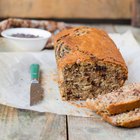
Calories in Banana Bread With Chocolate ...
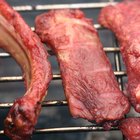
How to Smoke Food With Cedar Chips

Dominos Nutrition Information

How Long to Bake a Pizza With Lots of ...

The Amount of Lactose in Yogurt

List of Foods Containing High Amounts ...
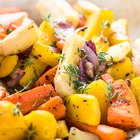
How to Cook Vegetables in a Roaster ...

The Best Type of Pizzas to Eat

Baked Cubed Squash
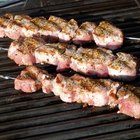
How to Cook Pork Loin

How to Cut a Honey Mango
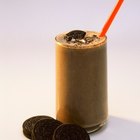
Chocolate Milk and Weight Loss
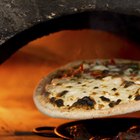
Lou Malnati's Nutrition Information

Things to Do With Prego Sauce
6 Meals Under 300 Calories
References
Writer Bio
Shannon Marks started her journalism career in 1994. She was a reporter at the "Beachcomber" in Rehoboth Beach, Del., and contributed to "Philadelphia Weekly." Marks also served as a research editor, reporter and contributing writer at lifestyle, travel and entertainment magazines in New York City. She holds a Bachelor of Arts in literature from Temple University.
Photo Credits
Jonathan Austin Daniels/iStock/Getty Images